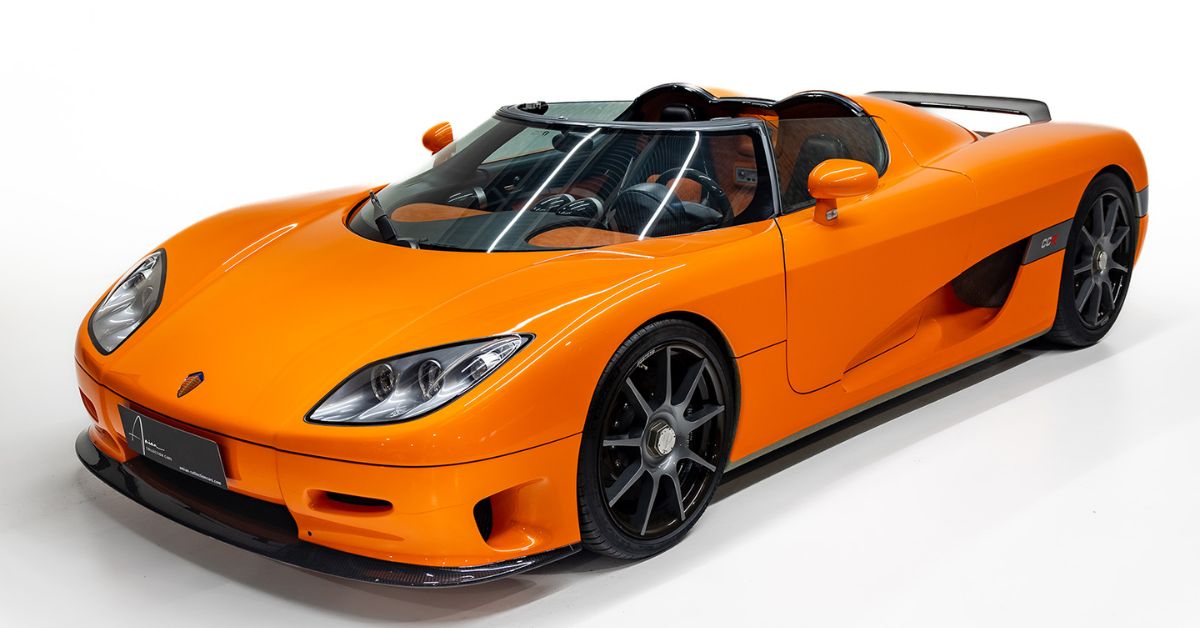In the early 2000s, the supercar world was dominated by Italian flair and German precision. But from the quiet town of Ängelholm, Sweden, a small company with big dreams was preparing to shake the foundations of automotive performance. That company was Koenigsegg, and its weapon of choice? The Koenigsegg CCR—a machine that didn’t just aim to compete, but to conquer.
🛡️ Born from Vision, Built for Velocity
The CCR was unveiled in 2004 as the successor to Koenigsegg’s first production car, the CC8S. It wasn’t just an evolution—it was a revolution. With only 14 units ever produced, the CCR was a rare breed, crafted with obsessive attention to detail and a relentless pursuit of speed.
At its core was a 4.7-liter Koenigsegg V8 engine, based on the Ford Modular block but heavily modified in-house. Twin Rotrex superchargers helped it churn out a jaw-dropping 806 horsepower and 920 Nm of torque, making it one of the most powerful production cars of its time. This power was sent to the rear wheels via a 6-speed manual transmission, giving purists the kind of raw driving experience that modern paddle-shift systems often dilute.
🚀 Performance That Redefined Possibility
The numbers speak for themselves. The CCR could sprint from 0 to 100 km/h in just 3.2 seconds, and its theoretical top speed was over 395 km/h (245 mph). In February 2005, it set a Guinness World Record at the Nardò Ring in Italy, clocking 388 km/h (241 mph)—making it the fastest production car in the world at the time.
But the CCR wasn’t just about straight-line speed. It featured vented disc brakes, upgraded suspension, and larger tires and wheels for improved handling. The aerodynamic enhancements—including a larger front splitter and a rear wing—ensured stability at high speeds, while the car’s carbon fiber monocoque chassis kept weight to a minimum: just 1,180 kg dry.
🎨 Design: A Swedish Blade
The CCR’s design was a blend of aggression and elegance. Its low-slung profile, wide stance, and signature dihedral synchro-helix doors gave it a futuristic look that turned heads wherever it went. The body was sculpted for aerodynamic efficiency, with every curve and crease serving a purpose.
Inside, the cabin was surprisingly refined. Leather and aluminum dominated the space, and while it lacked the digital wizardry of today’s hypercars, it offered a tactile, analog experience that connected driver and machine. The targa-style roof could be removed and stowed in the front trunk, adding a touch of open-air freedom to the driving experience.
👻 The Ghost Squadron Legacy
One of the most unique aspects of the CCR is its connection to Sweden’s military history. Koenigsegg’s factory was once home to Fighter Jet Squadron No. 1, known as the “Ghost Squadron.” To honor this legacy, the CCR bore a ghost emblem—a subtle but powerful nod to its roots in speed and precision.
This emblem has since become a symbol of Koenigsegg’s identity, representing its stealthy rise and relentless pursuit of excellence.
🧬 Engineering Excellence
Koenigsegg’s approach to engineering was anything but conventional. The CCR was a showcase of innovation, from its supercapacitor-based electrical systems to its custom-built engine components. The company’s founder, Christian von Koenigsegg, was deeply involved in every aspect of development, ensuring that the car reflected his vision of uncompromising performance.
The CCR also laid the groundwork for future Koenigsegg models. Its platform and technologies would evolve into the CCX, and eventually into groundbreaking cars like the Agera RS and Jesko. In many ways, the CCR was the blueprint for Koenigsegg’s rise to hypercar royalty.
🌍 A Rare Gem in the Supercar Universe
With only 14 units ever made, the Koenigsegg CCR is a collector’s dream. Each car is a piece of automotive history, representing a moment when a small Swedish company dared to challenge the giants—and succeeded.
Today, the CCR stands as a testament to what passion, innovation, and fearless ambition can achieve. It’s not just a car—it’s a statement. A declaration that the future belongs to those bold enough to build it.
🏁 Final Thoughts
The Koenigsegg CCR may not have the hybrid wizardry or active aerodynamics of today’s hypercars, but it doesn’t need them. It’s a raw, unfiltered celebration of speed, engineering, and design. It’s the kind of car that reminds us why we fell in love with driving in the first place.
In a world increasingly dominated by automation and electrification, the CCR is a roaring reminder of the analog soul of performance. And for those lucky enough to experience it, it’s not just a drive—it’s a thrill ride through the pages of automotive legend.
